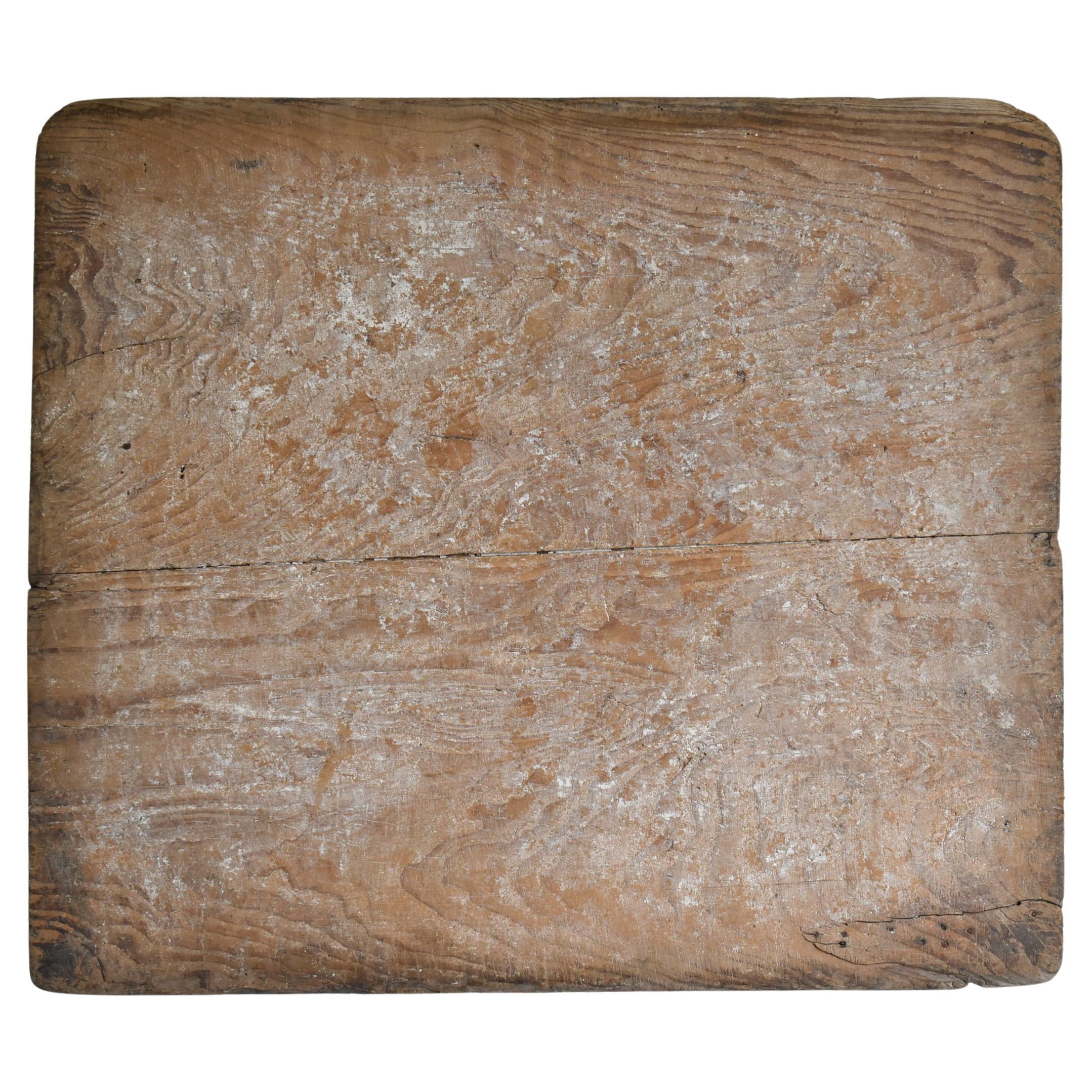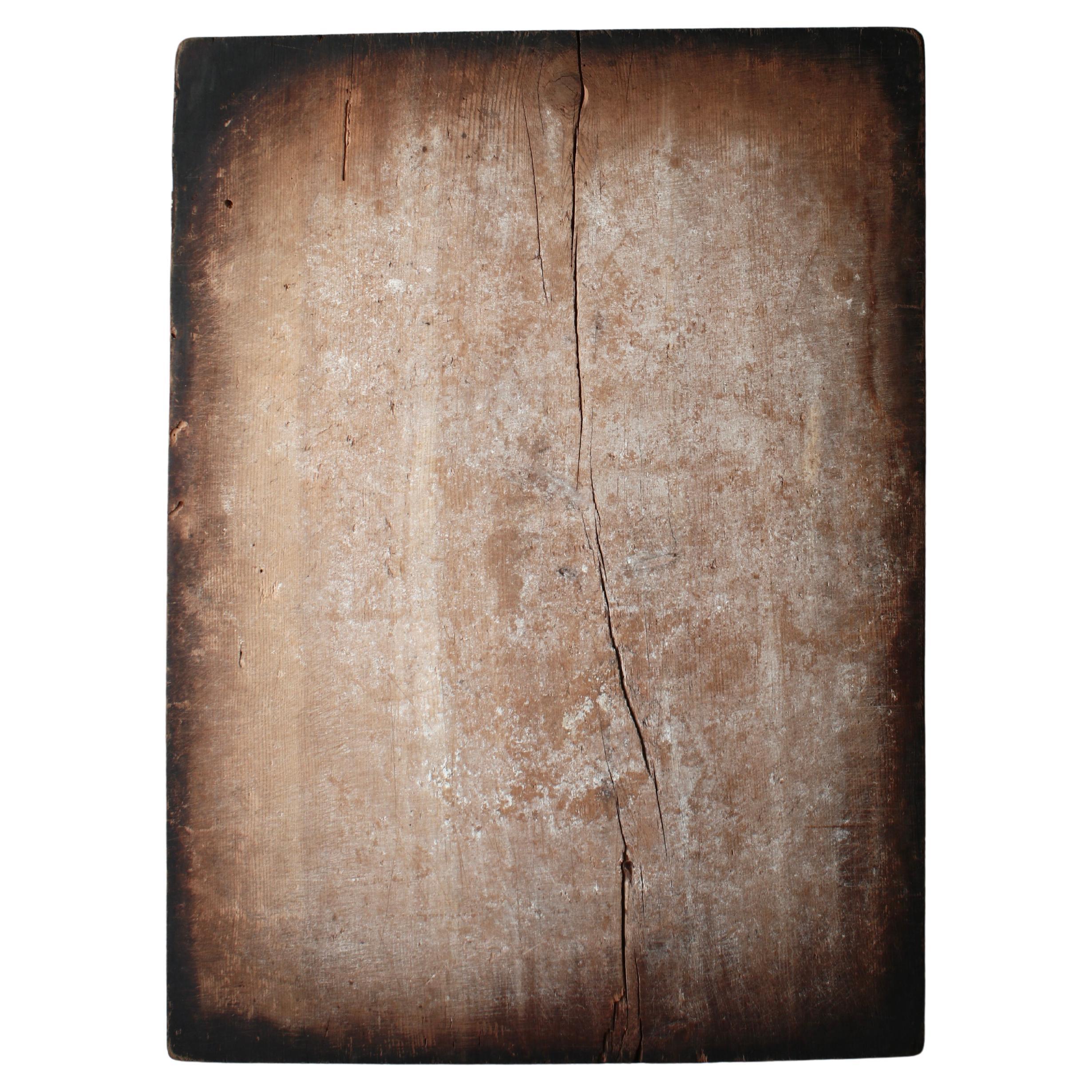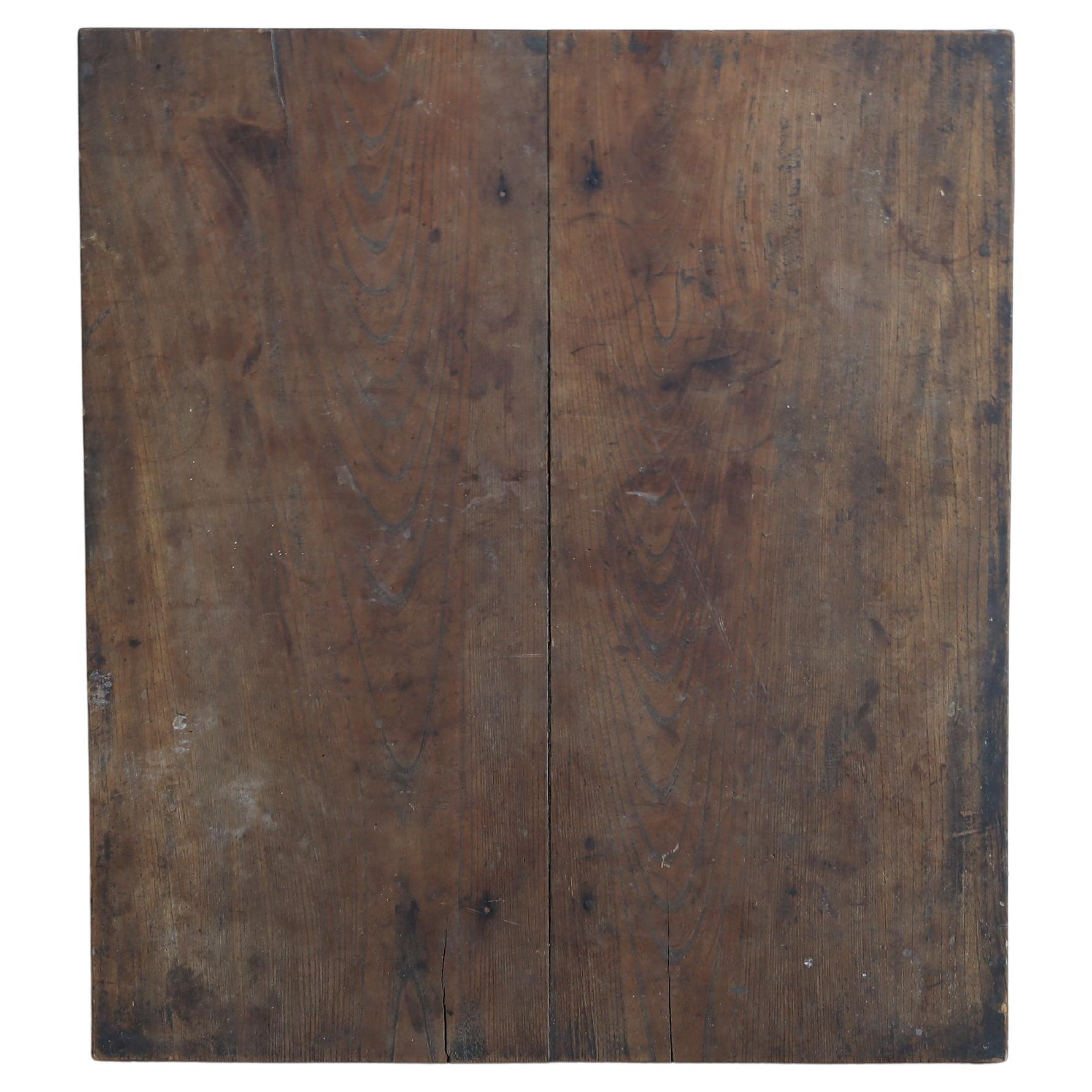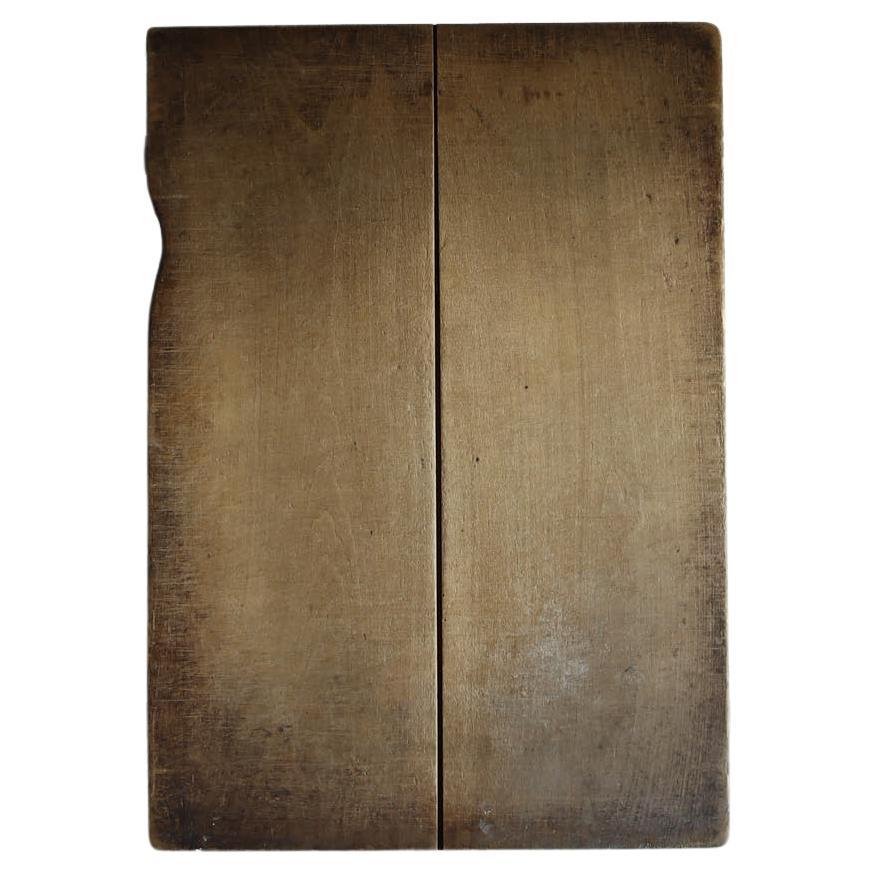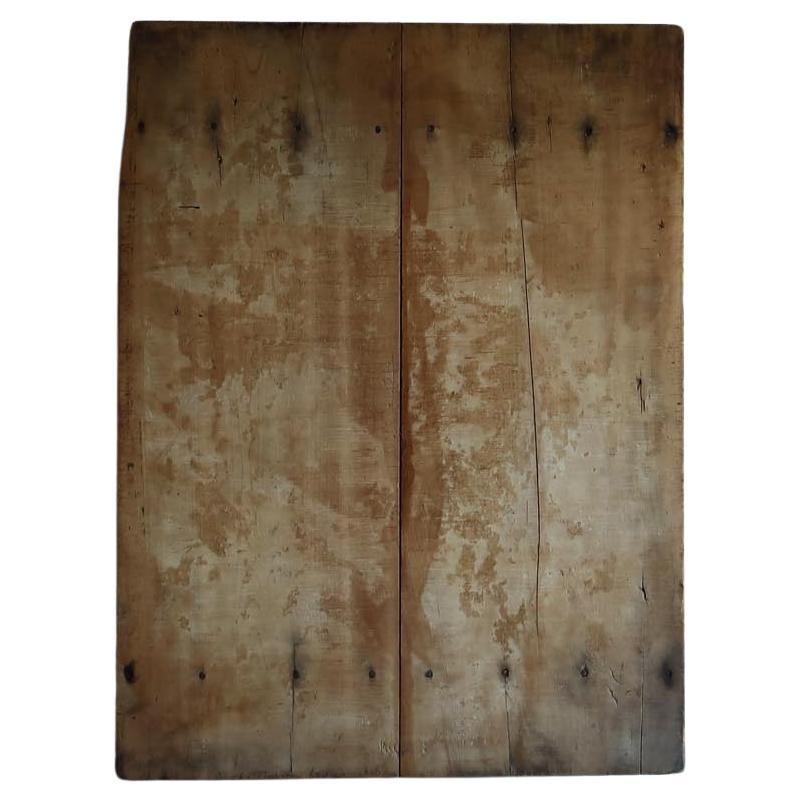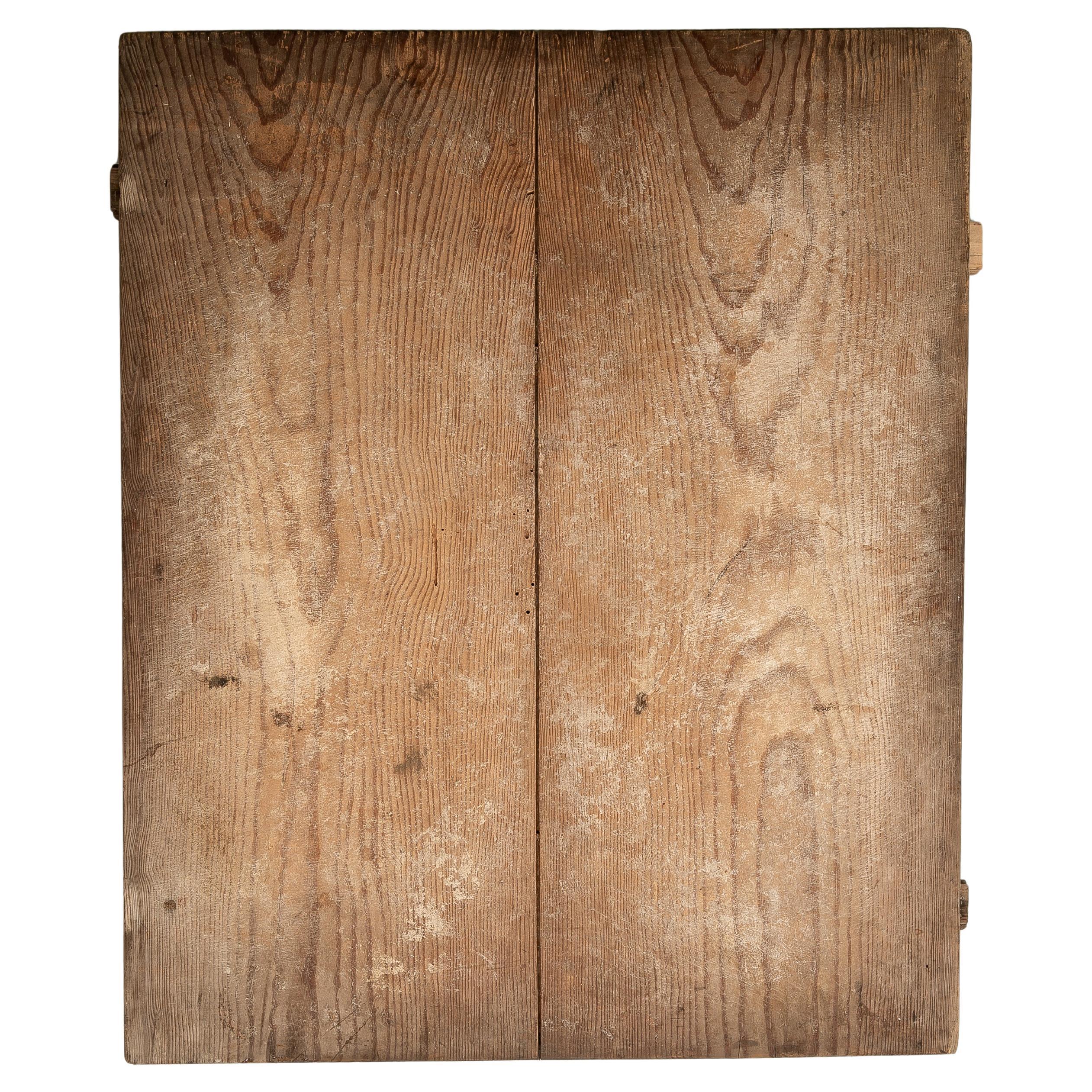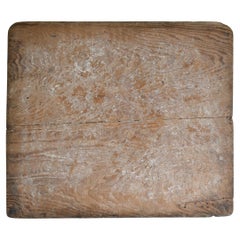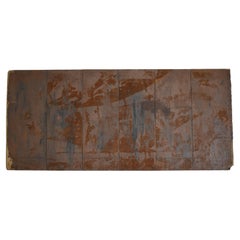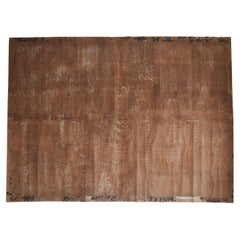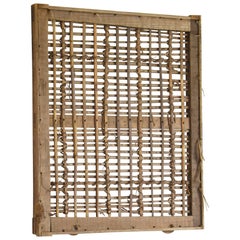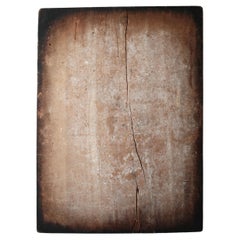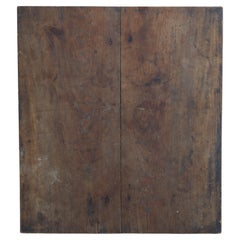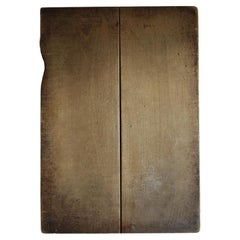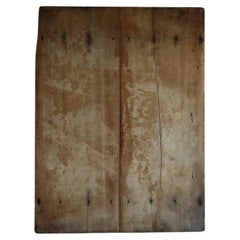Items Similar to Japanese Antique Dough Board Wall Art 1879s / Display Stand Wabi Sabi
Want more images or videos?
Request additional images or videos from the seller
1 of 21
Japanese Antique Dough Board Wall Art 1879s / Display Stand Wabi Sabi
$900
£676.11
€779.66
CA$1,248.87
A$1,387.77
CHF 727.20
MX$17,018.49
NOK 9,275.07
SEK 8,725.65
DKK 5,819.05
Shipping
Retrieving quote...The 1stDibs Promise:
Authenticity Guarantee,
Money-Back Guarantee,
24-Hour Cancellation
About the Item
This is an old noodle board made in Japan.
On the back, it is inscribed “明治十二年” in writing, clearly indicating that it was made in 1879s.
Over 140 years have passed, and this piece still has a beautiful and powerful presence.
Made of light and sturdy cedar wood, it is a practical tool that was actually used in daily life at the time.
In the Meiji period, noodle boards were used as a worktable for making soba and udon noodles by hand, and were one of the indispensable cooking tools in the home.
This board also retains traces of the many times it was touched by hand, the flour was spread on it, and the rolling pin was rolled on it.
The years of use and aging have carved a deep flavor into the surface, giving it the beauty of an abstract painting.
This is not an artifice, but an “accidental beauty” that is naturally created through the accumulation of daily life.
Its quiet yet powerful presence naturally stands out in a space.
Weighing only 7.5 kg, it is relatively lightweight and recommended to be hung on the wall as an art piece.
As a form that transcends its intended use, it is a fun way to incorporate the beauty of time and materials into everyday life.
Just by being there, you can feel the serenity and weight of time, and the spirit of wabi-sabi resides in this gem.
Weight: 7.5 kg
_____________________________________________
Our Philosophy
Objects always tell the truth.
All I can do is just to face with them sincerely and give
them deep affection as much as I can.
There is no boundary of nationalities and of eras in beauty.
But I think now is the time we choose 'Japanese style' and it
will be the best way to remind us of what we are losing
today and to question us about an essence of beauty again.
I hope that you can touch the memories which the objects here have,
feel and think of something invisible but exists undoubtedly.
- Dimensions:Height: 31.89 in (81 cm)Width: 37.01 in (94 cm)Depth: 3.15 in (8 cm)
- Style:Meiji (Of the Period)
- Materials and Techniques:Cedar,Woodwork
- Place of Origin:
- Period:
- Date of Manufacture:1879s
- Condition:Wear consistent with age and use.
- Seller Location:Chōsei District Nagara, JP
- Reference Number:1stDibs: LU10403244721212
About the Seller
New to 1stDibs
Joined in the past six months.
5.0
Platinum Seller
Premium sellers with a 4.7+ rating and 24-hour response times
Established in 2017
1stDibs seller since 2025
16 sales on 1stDibs
Typical response time: 4 hours
- ShippingRetrieving quote...Shipping from: Chōsei District Nagara, Japan
- Return Policy
Authenticity Guarantee
In the unlikely event there’s an issue with an item’s authenticity, contact us within 1 year for a full refund. DetailsMoney-Back Guarantee
If your item is not as described, is damaged in transit, or does not arrive, contact us within 7 days for a full refund. Details24-Hour Cancellation
You have a 24-hour grace period in which to reconsider your purchase, with no questions asked.Vetted Professional Sellers
Our world-class sellers must adhere to strict standards for service and quality, maintaining the integrity of our listings.Price-Match Guarantee
If you find that a seller listed the same item for a lower price elsewhere, we’ll match it.Trusted Global Delivery
Our best-in-class carrier network provides specialized shipping options worldwide, including custom delivery.More From This Seller
View AllJapanese Antique Wabi-Sabi Wood Board 1860s-1900s / Wall Decoration
Located in Chōsei District Nagara, JP
This is an old Japanese wooden board called “Mochiita” (rice cake board).
It was used during the Meiji period (1860s-1900s) and is made of pine wood with a rich texture.
As the name ...
Category
Early 20th Century Japanese Meiji Decorative Art
Materials
Pine
Japanese Antique Large Iron Plate Abstract Art 1900s-1940s / Wabi Sabi
Located in Chōsei District Nagara, JP
This is a door that was an iron plate door made in Japan.
It is an old fixture made in the early Showa period (1900s-1940s), with iron plates carefully stretched over a cedar wood fr...
Category
Mid-20th Century Japanese Showa Decorative Art
Materials
Iron
Japanese Antique Large Paper Mat "Abstract art" 1860s-1920s / Wabi Sabi
Located in Chōsei District Nagara, JP
This is a very old Japanese matte paper.
It was made during the Meiji period (1860s-1920s) and is very large, measuring approximately 1900 mm x 1420 mm.
The Japanese paper is carefu...
Category
Early 20th Century Japanese Meiji Decorative Art
Materials
Paper
Japanese Antique Small Door Wall Decoration 1860s-1900s / Abstract Art Wabi Sabi
Located in Chōsei District Nagara, JP
This is an old small window frame made in Japan. It was originally used as a traditional Japanese mud wall fixture. It dates back to the Meiji period (1860s-1900s) and has been in us...
Category
Early 20th Century Japanese Meiji Decorative Art
Materials
Bamboo, Cedar
Japanese Antique Copper-Clad Door 1860s-1900s / Abstract Art Wabisabi
By Axel Vervoordt
Located in Chōsei District Nagara, JP
This is an old copper-clad sliding door (small window) made in Japan.
It was used as part of the fittings during the Meiji period (1860s-1900s), and the surface is constructed of cop...
Category
Early 20th Century Japanese Meiji Decorative Art
Materials
Copper
Japanese Antique Storage Box 1860s-1900s / Tansu Sideboard Wabisabi
Located in Chōsei District Nagara, JP
This is an old box storage made in Japan.
It was made during the Meiji period (1860s-1900s), and the material used is paulownia wood, which is precious today. Paulownia wood is light...
Category
Early 20th Century Japanese Meiji Sideboards
Materials
Iron
You May Also Like
Japanese Antique Wooden Board / Wall Decoration Abstract Art / Wabi-Sabi
Located in Iwate-gun Shizukuishi-cho, Iwate Prefecture
This is an old Japanese workboard.
It was called "Mochiita" and was used as a workbench for kneading flour.
It seems to be around the Meiji period.
The board is thought to be pine...
Category
Antique Late 19th Century Japanese Meiji Decorative Art
Materials
Wood
Japanese Antique Wooden Board , Wall Decoration Abstract Art , Wabi-Sabi
Located in Katori-Shi, 12
This wooden board was made in the Taisho era.
It was used as a "mochi board." A "mochi board" is a board from the Meiji era that was used as a workbench for kneading flour, and is m...
Category
Early 20th Century Japanese Taisho Doors and Gates
Materials
Wood
Japanese Antique Wooden Board, "Abstract Sculptures", Wabi-Sabi, Mingei
Located in Katori-Shi, 12
This is a wooden antique board from the Meiji era.
It is made of Japanese cedar wood.
It has a beautiful appearance due to years of use and aging.
It was used as a board for kneadi...
Category
Early 20th Century Meiji Antiquities
Materials
Wood
Japanese Antique Wooden Board, "Abstract Sculptures", Wabi-Sabi, Mingei
Located in Katori-Shi, 12
This is a wooden antique board from the Meiji era.
It is made of Japanese cedar wood.
It has a beautiful appearance due to years of use and aging.
It was used as a board for kneadi...
Category
Early 20th Century Meiji Antiquities
Materials
Wood
early 20th Wabi sabi Japanese dough board, wood wall decor, primitive mingei
Located in 常陸大宮市, JP
Vintage wooden dough board made of thick, solid cypress board, circa 1900s - 40s.
This type of dough board were widely owned by the ordinary Japanese households for kneading, rolling out & cutting the dough to make a rice cake or noodles on it - these history gives a unique wabi sabi touch to the item.
Made with traditional wood joinery without metal fastener.
Actual item weight : 33.73 lb (15.3 kg)
***
We're eco-friendly, organic-oriented vintage wood furniture...
Category
Early 20th Century Japanese Rustic Furniture
Materials
Wood, Cypress
$544 Sale Price
32% Off
Japanese Antique Wooden Board , Wall Decoration Abstract Art , Wabi-Sabi
Located in Katori-Shi, 12
This wooden board was made in the Taisho era.
The dense and beautiful grain of the wood, unique to time-honored zelkova, is eye-catching. The color that has deepened over the years,...
Category
Early 20th Century Japanese Taisho Antiquities
Materials
Wood
More Ways To Browse
Antique Spirit Board
Antique Rolling Pin Rolling Pins
Antique Dough Board
Dough Board
German Film Poster
Red Crystal Bowl
Rooster And Hen
Shallow Shelves
Shell Encrusted
Used Cabinets Maryland
Vintage Glasses Hong Kong
Vintage Lawson
Vintage Wall Kitchen Cabinet
Antique Brass Escutcheon Plate
Antique Etched Glass Panel
Antique Hemp
Antique Polishing Machine
Antique Tea Chest
